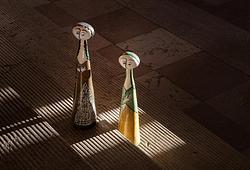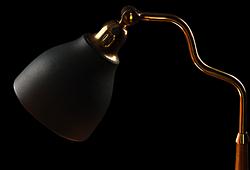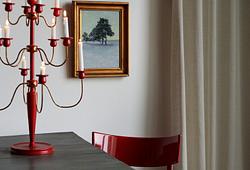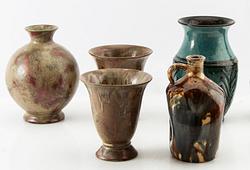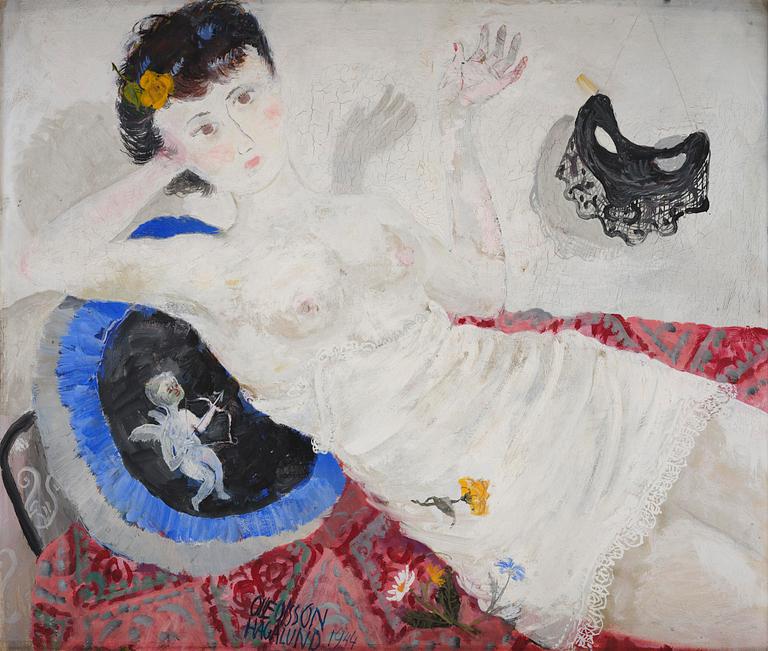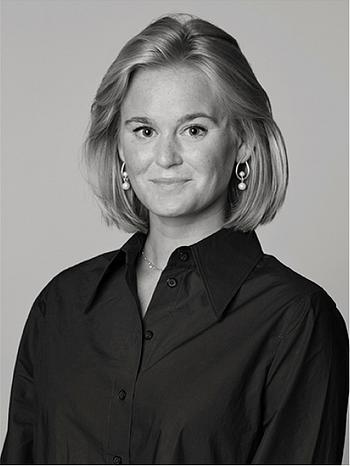Olle Olsson-Hagalund
"Efter maskeraden"
Signed Olle Olsson-Hagalund and dated 1944. Panel 45.5 x 54.5 cm.
Provenance
Björn Näsvall, Bromma.
Private collection.
Exhibitions
Gummesons Konsthall, Stockholm, "Naket i svenskt modernt måleri", 1947.
Liljevalchs konsthall, Stockholm, "Olle Olsson-Hagalund Minnesutställning", 12 October - 30 December 1973, cat. no 75.
Lunds Konsthall, "Olle Olsson Hagalund", 15 June - 25 August 1974, cat. no 61.
More information
During the 1930s, while on study trips in Europe, Olle Olsson Hagalund discovered a new world of motifs beyond his beloved hometown Hagalund in Solna. In 1939, he travelled to Paris with his Maja without knowing a single word of French or any other language. They visited museums, sat at sidewalk cafés, rode buses and the metro, and intensely studied all the fascinating types of people bustling about in the metropolis.
In the paintings from the 1940s, Olle Olsson Hagalund's depictions of Hagalund were populated by people wandering the streets among the quaint buildings of Hagalund. These motifs were gradually replaced in the mid-1940s by female portraits that are not portraits in the traditional sense, but rather depicted as narratives with titles such as Yellow Hat, Girl in Front of a Mirror, Girl with a Yellow Flower in Her Hair, or as here — After the Masquerade.
The model reclining on the sofa in After the Masquerade is believed to be Olle Olsson Hagalund's wife, Elsa Olsson. She appears in several of his paintings, and here she throws her mask as delicate summer flowers fall to the floor. The artist has included a small putto who, in his embroidered state, aims an arrow of love at Elsa. As in many of his works, there is a humorous and warm tone, where the subject is portrayed with great affection and intimacy.
He himself said that he never knew what it would become when he started painting. "It can be something entirely different from what I saw. It becomes so much of a tale and poetry. I am very amused by painting female figures, doubly amused when I am also amused by the woman. You see a woman on the street, in a restaurant. Suddenly, you get that snap." (Eric Wennergren, "Olle Olsson Hagalund", Bonniers, Stockholm 1977, pp. 70-72).
Olle Olsson Hagalund cannot be easily categorised. Naïve, expressionist, and romantic are terms often used to describe his art. He preferred to call himself a flâneur who throughout his life observed the people he encountered. Olle Olsson Hagalund portrayed the people around him with compassion, tenderness, and admiration, and his longing for the idyllic feels ever relevant in our tumultuous times.






